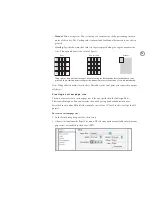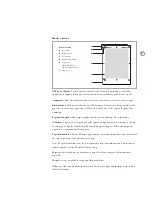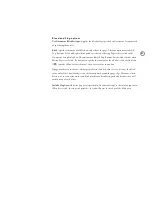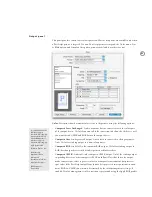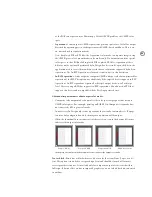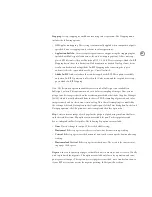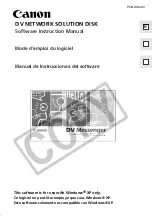
70
I n D e s ig n Post Sc ri pt f i l e , d rive r i nde p e nde nt and device de p e nde nt
PostScript generated by: Adobe InDesign only
Device targeted: By PPD only
Implications of this output path:
•
Useful for pre-separated workflows that will be imposed later, to control Adobe In-RIP
Trapping from InDesign, or to use InDesign’s built-in trapping. In-RIP separations and
Adobe In-RIP trapping are available only if you select a PPD that supports them.
•
Special printer features supported by the PPD are not available. To use them, use a
PostScript output path that uses a printer driver.
•
As DSC-compliant as the InDesign PostScript driver- and device-independent workflow,
and able to target a specific device.
•
Contains device-specific information for line screens, media sizes, and resolutions.
•
Supports all output color modes (composite or separated), including composite CMYK
with spot colors, if you select a PPD that supports these capabilities.
•
Can be trapped from InDesign when separations are specified in the Output panel of the
Print dialog box.
•
Can only be printed to a file, not directly to a device.
To set up an InDesign driver-independent and device-dependent PostScript file:
1. In the Print dialog box, choose PostScript® File from the Printer pop-up menu.
2. Choose a device name from the PPD pop-up menu.
Printer and PPD menus set up for InDesign driver-independent, device-dependent output
Adob e PS / Post Sc ri pt 5 d rive r Post Sc ri pt f i l e ( W i ndows )
PostScript generated by: Both Adobe InDesign and the AdobePS printer driver
Device targeting: By a printer pre-configured in the operating system
Implications of this output path:
•
Useful if your shop handles all prepress tasks at the RIP, such as when printing to a digital
press or when the RIP system is capable of trapping, OPI image replacement, and imposi-
tion. Also useful for proofing by the customer. If any prepress tasks are to be done later in
the workflow, another output path may be more effective.
•
Contains device-specific information for line screens, media sizes, and resolutions, along
with support for driver-specific features for a specific output device. This results in























